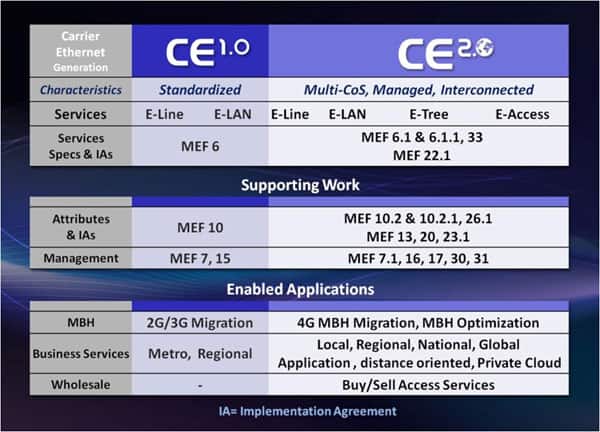The Metro Ethernet Forum (MEF) announced Carrier Ethernet 2.0 as the next generation in the evolution of Ethernet services. This next generation is defined as “networks and services that enable multiple Classes of Service and manageability over interconnected provider networks”. These three service attributes of Multiple Classes of Service (Multi-CoS), Manageability and Interconnect reflect major new capabilities of E-Line and E-LAN services, as well as the addition of new E-Tree and E-Access services.
Carrier Ethernet 2.0 is Networks and Services that enable Multi-CoS and Manageability over Interconnected provider networks.
iConverter Network Interface Devices (NIDs) are Carrier Ethernet 2.0 Certified to deliver services that support Multiple Classes of Service (Multi-CoS), Manageability and Interconnect. CE 2.0 certified compliant NIDs are a critical element in the demarcation and delivery of CE 2.0 services as they traverse one or more Service Provider networks on a regional, national and global scale.
The first generation of Carrier Ethernet provided the standardization that enabled the growth of Ethernet to a ubiquitous service available in most metropolitan markets worldwide.
Carrier Ethernet 2.0 addresses the issues that have delayed global deployments of Ethernet services across multiple networks with efficient use of network resources and cohesive management platforms. MEF CE 2.0 standards and certified compliant equipment are the next step in the evolution of Carrier Ethernet and will open new opportunities in cloud services, mobile backhaul and business services.

CE 1.0 and 2.0 Standards Comparison from the MEF
Carrier Ethernet 2.0 is more than the latest technical specifications. It is standardized functionality that reduces operational costs and streamlines the complexities involved in the deployment of mobile backhaul, cloud services and wholesale Ethernet services. CE 2.0 brings compelling new business opportunities that will enable the projected 100% growth of global Ethernet services by 2016.










